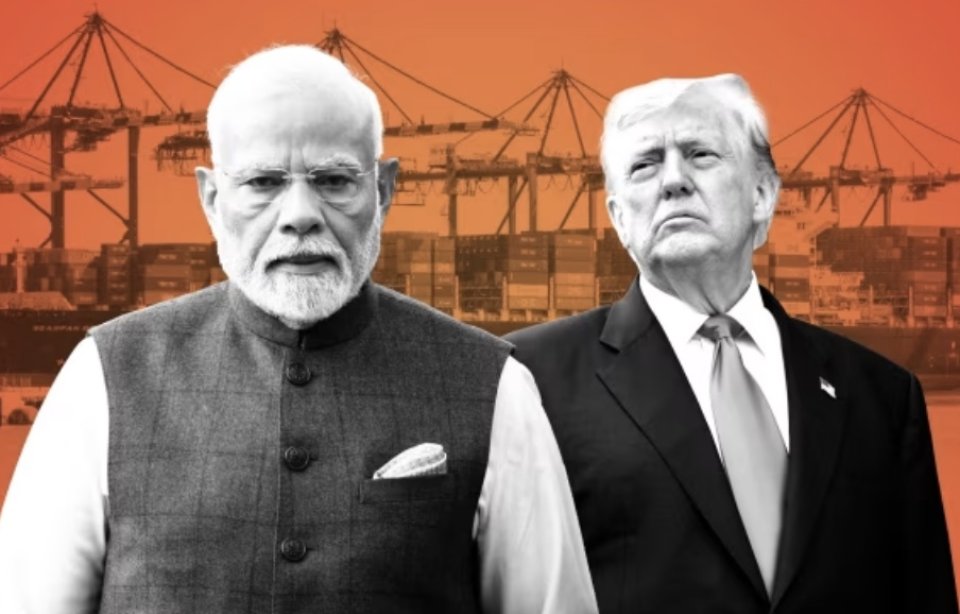India’s export engine remains strong despite fresh trade challenges from the United States. Washington has doubled tariffs—now above 50%—on a wide range of Indian labour-intensive goods including textiles and apparel, agriculture, gems and jewellery, leather, footwear, electrical machinery, and shrimp. Nearly half of India’s USD 86 billion merchandise exports to the US now face higher duties, though critical sectors such as pharmaceuticals, electronics, and petroleum have been spared.
While the US is still India’s largest export partner, accounting for about USD 86 billion in 2024–25, New Delhi has reduced its dependence by building a far more diversified trade portfolio. Many of the top products shipped to the US are also exported to 15+ other destinations where demand is growing faster—averaging over 19% annually between FY2022 and FY2025.
Rising Stars in India’s Export Map
- The Netherlands: Exports soared to USD 22 billion, growing at 42% annually—making it one of the fastest-rising markets.
- United Arab Emirates: Now India’s second-largest partner at USD 36 billion, supported by the CEPA trade pact. The UAE also acts as a global re-export hub for Africa, Europe, and West Asia.
- United Kingdom: Exports reached USD 14 billion with steady 15% annual growth, boosted by post-Brexit trade opportunities.
- Saudi Arabia: Shipments rose to USD 11 billion, growing 20% per year, aligned with Saudi Vision 2030 diversification.
- South Africa: Exports worth USD 7 billion, up 20% annually, provide India a gateway to Africa’s fast-growing markets.
- Australia: At USD 8 billion, exports are rising at 27% annually under the ECTA trade deal.
- Emerging markets: Brazil, Mexico, and Turkey are also seeing strong double-digit growth (17–21% annually).
Collectively, India exported USD 162 billion to these major partners in 2024–25—nearly double the US figure.
Diversification by Product Basket
India’s top 10 exports to the US—accounting for 71% of shipments—are also in high demand across other markets.
- Electrical machinery (USD 16 billion to US) → Strong demand in the Netherlands, UAE, UK, and Asia.
- Pharmaceuticals (USD 10 billion) → Growing sales in Australia, Saudi Arabia, Brazil, and South Africa.
- Gems and jewellery (USD 10 billion) → Popular in the UAE, Belgium, Italy, and UK.
- Textiles, apparel, and chemicals → Expanding in Europe, Latin America, and Asia.This overlap allows exporters to leverage existing capabilities while tapping new markets, avoiding the risks of over-dependence on the US.
Policy Push for Global Reach
India is accelerating its trade diversification strategy through new agreements. The CEPA with the UAE and ECTA with Australia have already unlocked growth, while ongoing talks with the UK, EU, and Latin American partners could further reduce tariff and regulatory barriers. Regional hubs such as the Netherlands, UAE, and South Africa also serve as gateways to wider markets, multiplying India’s global reach.
At the same time, the government is encouraging exporters to expand beyond traditional strengths into renewable energy technologies, digital services, green chemicals, and agri-products. With global demand shifting towards sustainability, India is positioning itself to ride the next wave of trade growth.
Outlook
The US will remain an important trade partner, but India’s rapid pivot to high-growth markets such as the Netherlands, UAE, Australia, and Saudi Arabia highlights a decisive shift. This diversified portfolio not only cushions India against tariff shocks and geopolitical risks but also sets the stage for long-term, resilient export growth.
By building on trade agreements, expanding into emerging sectors, and consolidating its presence across continents, India is steadily transforming into a balanced exporting nation—less vulnerable to disruptions and more confident in its role as a global trading power. (Source: europeantimes.org)







